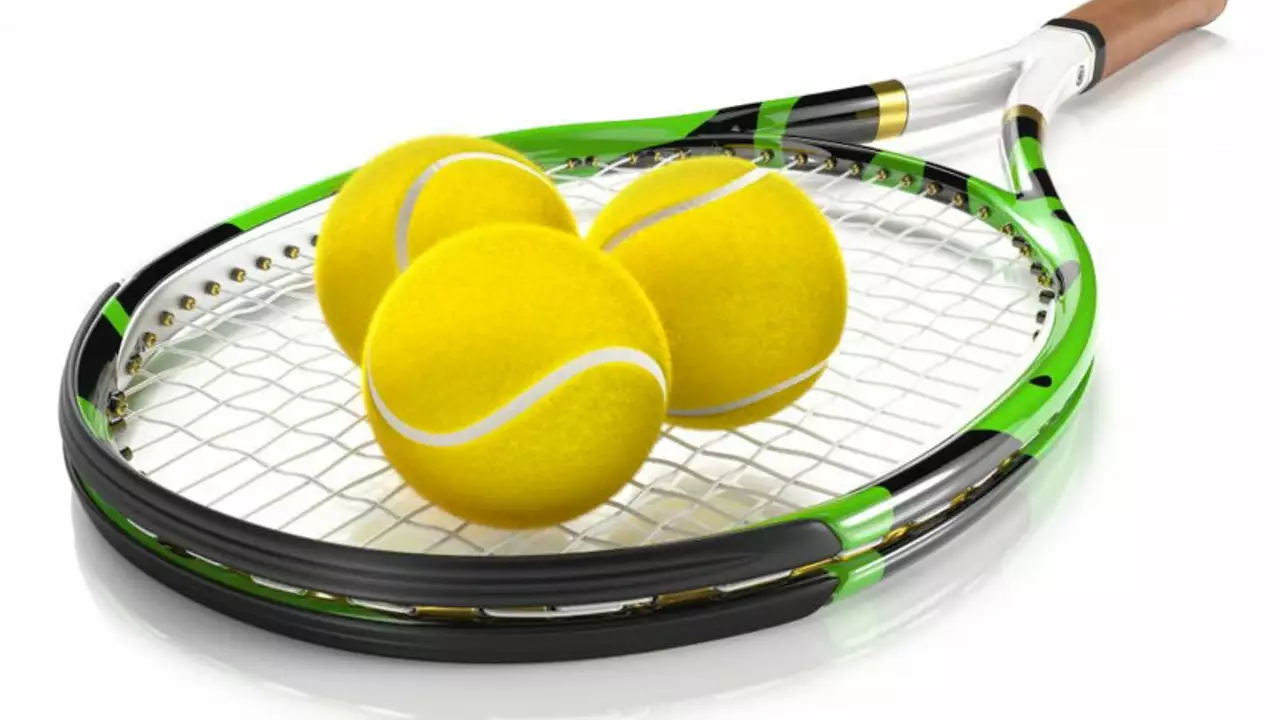Polishing the Swing: Fullerenes and Tennis
A miraculous element in the world of sports is known by the name of "Fullerenes". Over the years, the properties of these fascinating molecules have transformed the mechanics of tennis rackets, transforming the sport for millions worldwide. Peculiarly spherical, these molecules have unique qualities that when incorporated into the fabric of a tennis racket, significantly enhances its performance. Wouldn't it be nice if everything was as simple as that, though?
On a warm breezy evening, as I sat in my Adelaide home's patio watching the sun set, a question popped into my mind. Why were fullerenes used in tennis rackets? I chuckled as Samson, our golden retriever, barreled towards me, clearly preferring a good old game of fetch over any science-related debates. But the question had firmly lodged itself within my inquisitive mind and thus, embarked a journey down the scientific rabbit hole!
The Fullerene Journey: From Buckyballs to Rackets
The fascinating world of fullerenes begins with its unique structure. Fullerenes – fondly known as “buckyballs” for their resemblance to soccer balls – consist of 60 carbon atoms linked together, forming a perfectly symmetrical, hollow sphere. This tangible charm coupled with its miraculous properties led scientists around the globe to experiment with fullerenes, one of the most exotic forms of carbon. Such was the enthralling tale of fullerenes, cradled with care in the womb of chemistry, manifesting itself in the world of sports!
The true alchemists among us recognized the potential of fullerenes to revolutionize common items. And what better common item to renew than the ubiquitous tennis racket? By blending these buckyballs with existing racket materials, sports equipment manufacturers introduced a wave of "fullerene-enhanced" tennis rackets that promised to revolutionize the game. And true to their word, they did!
A Philosophical Swing: How Fullerenes Change the Tennis Game
Tennis is a sport that draws upon the entirety of a player's stamina, agility, and skill. The power of a player's strike and the swiftness of their movements is often determined by their equipment, especially the racket. A good racket can lighten a player's load and increase their performance drastically.
With the introduction of fullerene-enhanced tennis rackets, players saw a substantial shift in their games. The incorporation of fullerenes drastically lightened the overall weight of the racket without compromising on its durability. This allowed players to swing faster and hit harder, improving not only their own performance but the intensity and excitement of the game itself.
Samson, Tennis Balls, and Fullerenes: A Hilarious Experiment
For those of you who know me, you'd know that I simply couldn't resist testing this out on my own. I had the perfect partners for this experiment – Veronica, my incredibly supportive wife, and Samson, our golden retriever. Naturally, volleyball was my game of choice, but this experiment had piqued my interest.
One day, armed with our two different rackets – one purely graphite and the other, a little more fancy fullerene-grafted graphite – Veronica and I descended upon the local tennis court to put theory to test. Samson seemed to be the most excited one, his tail wagging furiously at the sight of tennis balls.
The Day Chewy made a Fullerene Chew Toy
Returning home later that day, tennis-victorious and utterly exhausted, I found Chewy, our Siamese cat, chewing away at a small model of a fullerene molecule. Chewy's general apathy towards anything not food-related was broken by the curious buckyball, much to my amusement. This stray incident only added to my deeper understanding of the quirky world of fullerenes: they can truly enchant any life form!
Fullerenes in the Matrix: Understanding the Science
The real question here is – how exactly do fullerenes improve the structure and performance of a tennis racket? On a molecular level, fullerenes act like microscopic ball bearings, dispersing stress evenly and reducing damage. This results in decreased vibrations during the hit, enhancing the player’s precision and comfort.
Moreover, incorporating fullerenes into a tennis racket significantly improves the elasticity of the racket, which is basically its ability to snap back into shape quickly after a stroke. This snap-back action increases the time of contact between the ball and the racket, thereby increasing the power transfer to the ball.
Fullerenes: The Unsung Heroes of Modern Sports Equipment
Fullerenes have stealthily integrated themselves into various spheres of our lives, particularly in sports science. Their potential is harnessed not just in the realm of tennis, but also in composing carbon fiber bikes, golf clubs, and even ski poles. The unique properties of fullerenes have encouraged continuous research and development in this field, and their diverse applications are far from being fully explored.
So, when we witness an extraordinary shot or a wondrous play on the tennis court, we have more than the player to commend. We have invisible, tiny balls of carbon, those unsung heroes, that have managed to revolutionize the game of tennis. Let's give them a grand applause!
From Buckyballs to Tennis Courts: A Revolutionary Journey
To summarize, the journey of fullerenes, from being just another molecule to revolutionizing the way we play sports, has been utterly fascinating. The scientific discovery of fullerenes and the careful implementation of their properties have truly changed the face of sports and tennis, in particular.
As a sports enthusiast, an inquisitive science fan, and a blogger – it has been an illuminating exploration diving deep into the impact of fullerenes on sports equipment. Moreover, the delightful day with Veronica, Samson, Chewy, and a pair of very different tennis rackets, remains a testament to the profound influence that science can have in unassuming corners of life!

